Spiraea, planting guide and care work
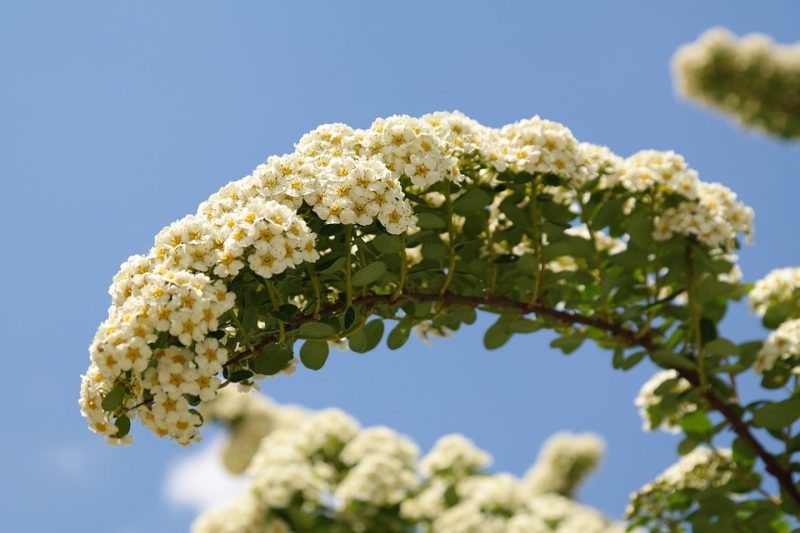
Spiraea (meadowsweets) is a genus that includes about 80-100 species of shrubs in the Rosaceae family. They are native in the temperate areas of the northern hemisphere. Most species are found in East Asia.
There are deciduous shrubs, the leaves grow alternately and are arranged in a spiral. They have a lanceolate shape and serrated edges, sometimes slightly lobed. Flowering differs from one species to another, some species bloom in spring, others in mid-summer. It develops small flowers, clustered in panicle or corymb inflorescences. The flowers have radial symmetry, are made up of 5 sepals and 5 petals of pink, white or reddish color.
It usually is planted for ornamental purposes, in parks and gardens, as solitary specimens, in groups, or in the form of hedges. Due to its salicylate content, it is used to extract salicylic acid and produce aspirin.
Species and varieties
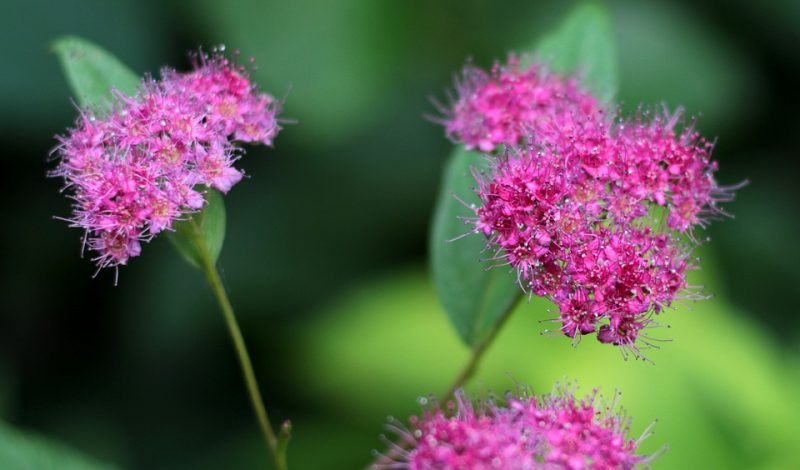
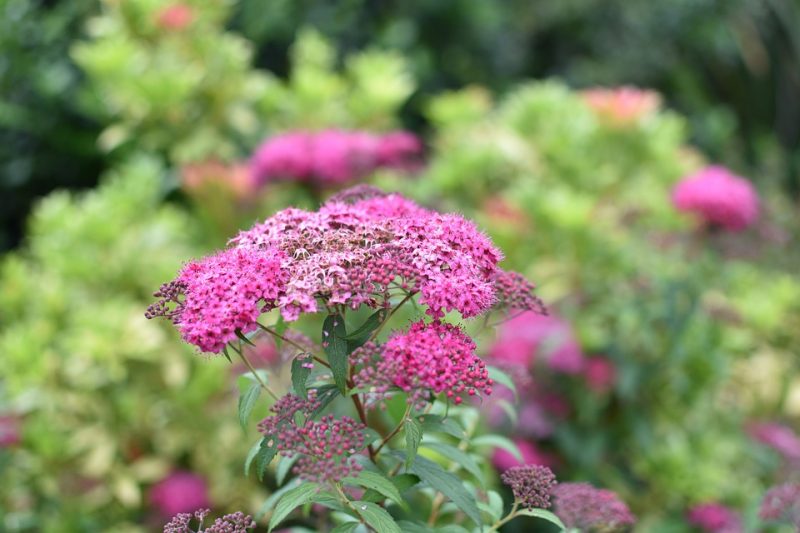
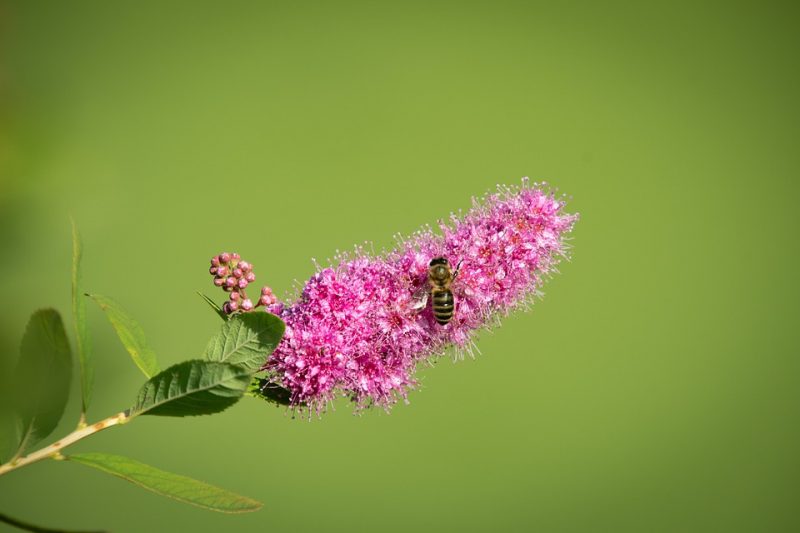
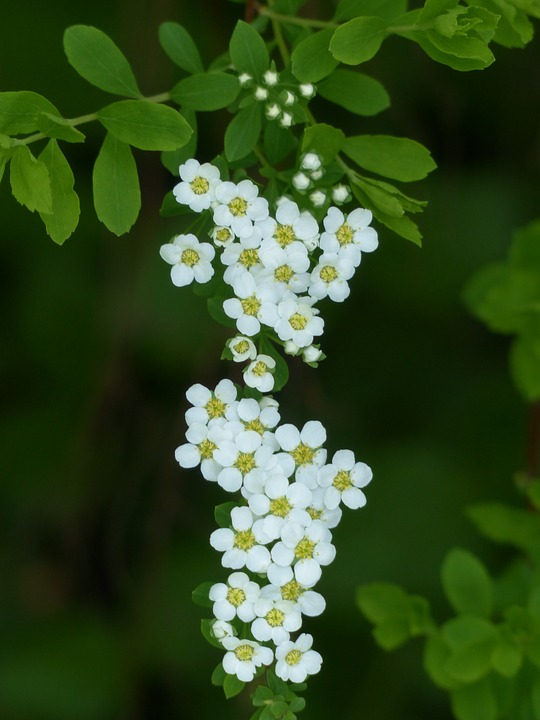
Spiraea salicifolia is a species native to Southern Europe and Northeast Asia, it grows straight, it is upwards-oriented and it reaches a height of 1.5 m. It has brown shoots and oblong-lanceolate leaves. It forms panicle-like inflorescences, pubescent, made up of pink flowers. The stamens of the flowers are long, accentuating their pubescent appearance.
Spiraea japonica (Japanese meadowsweet) is a species native to China, Japan, and Korea. It grows up to 1. 5 m tall. It has straight, weakly branched vines and oval-elongated leaves. It blooms in June-July. It forms corymbose inflorescences, large, made up of small, pink flowers. Cultivars:
‘Little Princess’ – it reaches heights of up to 50 cm and it develops small, flattened, intense pink inflorescences.
Spiraea douglasii is a species native to North America, which reaches heights of up to 2 m. It has elongated-elliptical leaves. It blooms in July-August, developing small, pink-purple, pubescent inflorescences.
Spiraea cantoniensis is a species native to China and Japan, reaching a height of 1.5 m and having a wide circumference. It has lanceolate leaves, with serrated or trilobate edges. It blooms in May-June, developing inflorescences in the form of hemispherical corymbs, 5 cm in size. Cultivars:
‘Lanceata’ – it has narrow leaves and double flowers.
Spiraea prunifolia var. plena is a species native to East Asia, reaching a height of 2 m. It forms thin shoots and oval leaves. It blooms in April-May and it has double white flowers, grouped 3-6.
Spiraea x vanhouttei (Bridal Wreath) is a hybrid, vigorous species, which reaches a height of 2 m. It has arching branches and ovate leaves, dark green, with a green-blue underside. It blooms in May-June, developing white corymbose inflorescences, which grow on the entire length of the branches.
Spiraea x billardii is a hybrid species between S. douglasii and S. salicifolia. It reaches a height of 2 m and it forms pubescent tendrils. The leaves have an oblong shape, with a double-serrated edge. It blooms in June-August. The flowers grow clustered in compact, pubescent-looking panicles (appearance given by the long stamens).
Spiraea x arguta – a hybrid shrub, with a height of 2 m. It has small, obovate, elongated or lanceolate leaves. Flowering is early, before the foliation. The flowers grow along the entire length of the branches, are white, grouped in small inflorescences.
Spiraea x bumalda is a small hybrid shrub, growing 80 cm tall. The young leaves have a reddish tinge. The inflorescences are corymbose, made up of pale pink flowers. Cultivars:
‘Anthony Waterer’ – it develops carmine-pink inflorescences, persistent for a long time (May-July).
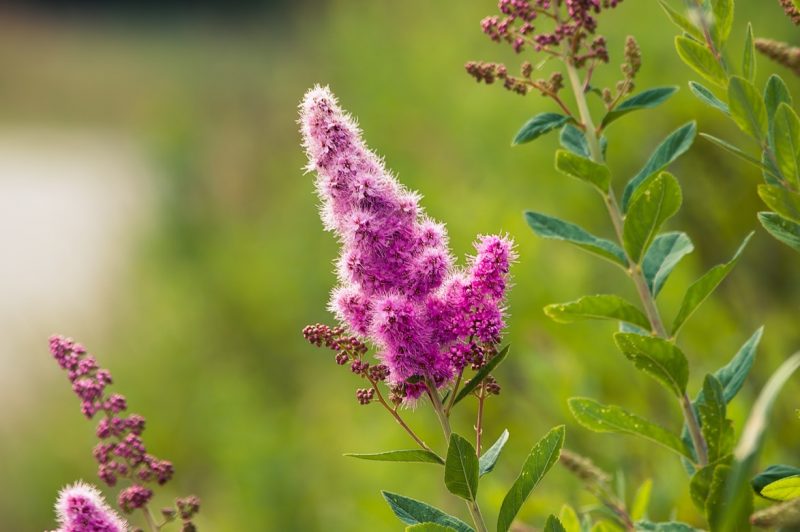
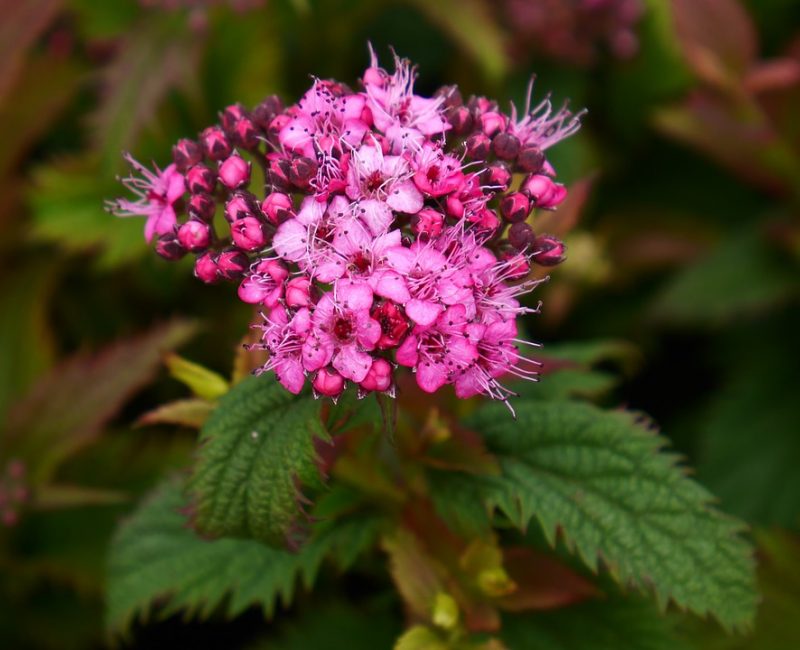
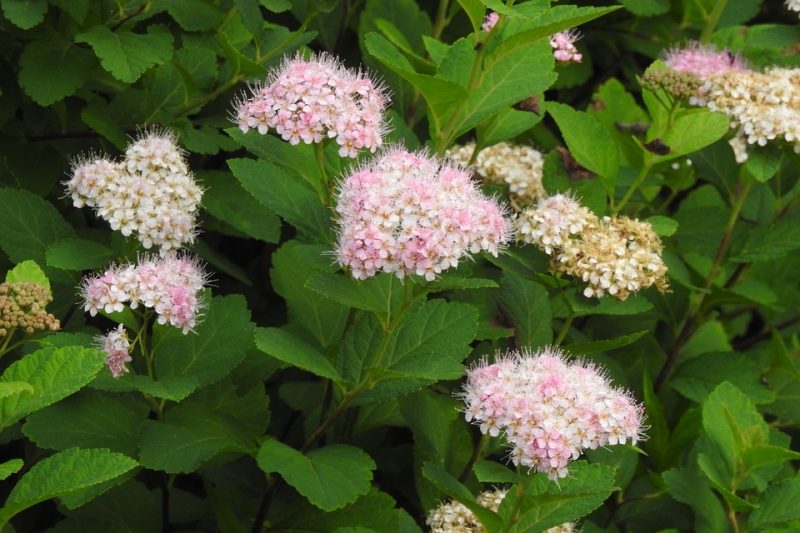
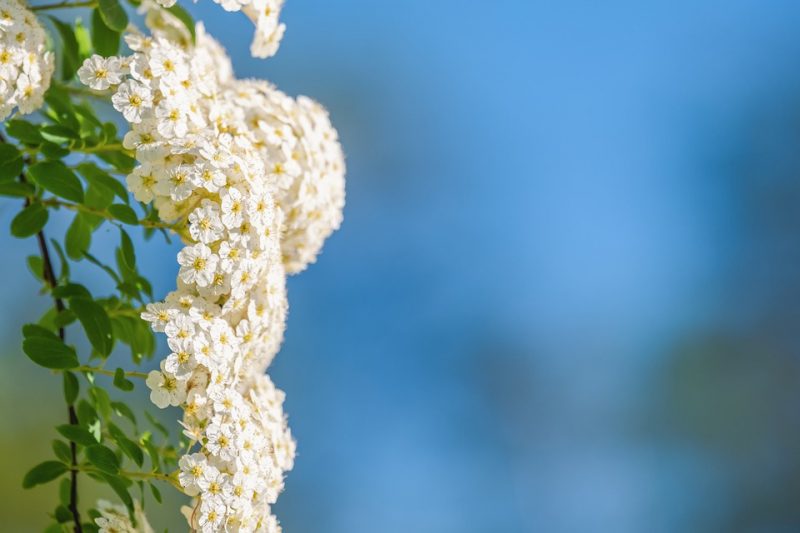
Environmental conditions
Light. They do not have specific requirements for light and can be planted both in full sunlight and in shaded areas.
Temperature. In general, they are species that are suitable for a temperate continental transitioning into an oceanic climate. S. cantoniensis and S. prunifolia have a lower frost resistance.
Soil. S. douglasii, S. x billardii si S. salicifolia require damp, deep soils and cannot withstand limestone. The other species do not have special requirements regarding the soil. S. x vanhouttei has the highest drought resistance.
Care
Watering. Watering should be done moderately so that the soil is maintained damp.
Fertilization. For the rich growth and flowering of shrubs, it is recommended to administer a special fertilizer during the vegetative growth period.
Recommended products
-
You can find products on a different store
Change Store -
You can find products on a different store
Change Store -
You can find products on a different store
Change Store -
You can find products on a different store
Change Store -
You can find products on a different store
Change Store -
You can find products on a different store
Change Store -
You can find products on a different store
Change Store -
You can find products on a different store
Change Store -
You can find products on a different store
Change Store -
You can find products on a different store
Change Store -
You can find products on a different store
Change Store -
You can find products on a different store
Change Store -
You can find products on a different store
Change Store -
You can find products on a different store
Change Store -
You can find products on a different store
Change Store -
You can find products on a different store
Change Store -
You can find products on a different store
Change Store -
You can find products on a different store
Change Store -
You can find products on a different store
Change Store -
You can find products on a different store
Change Store -
You can find products on a different store
Change Store -
You can find products on a different store
Change Store -
You can find products on a different store
Change Store -
You can find products on a different store
Change Store
Pruning. Shape correction cuts can be done in early spring or late autumn. It is recommended to remove the dry parts at any moment during the year.
Recommended products
-
You can find products on a different store
Change Store -
You can find products on a different store
Change Store -
You can find products on a different store
Change Store -
You can find products on a different store
Change Store -
You can find products on a different store
Change Store -
You can find products on a different store
Change Store -
You can find products on a different store
Change Store -
You can find products on a different store
Change Store -
You can find products on a different store
Change Store -
You can find products on a different store
Change Store -
You can find products on a different store
Change Store -
You can find products on a different store
Change Store -
You can find products on a different store
Change Store -
You can find products on a different store
Change Store -
You can find products on a different store
Change Store -
You can find products on a different store
Change Store -
You can find products on a different store
Change Store -
You can find products on a different store
Change Store -
You can find products on a different store
Change Store -
You can find products on a different store
Change Store -
You can find products on a different store
Change Store -
You can find products on a different store
Change Store -
You can find products on a different store
Change Store -
You can find products on a different store
Change Store
Diseases and pests. Plants can be affected by powdery mildew. The pests that can infest them are aphids.
Planting
It can be done in spring or autumn, during the vegetative dormancy period, at temperatures above 5° C, if the soil is not frozen and there is no danger of frost. Be sure to purchase planting material from authorized nurseries. Immediately after planting, the soil should be well-trodden and watered abundantly. After that, the earth has to be kept damp.
Recommended products
-
You can find products on a different store
Change Store -
You can find products on a different store
Change Store -
You can find products on a different store
Change Store -
You can find products on a different store
Change Store -
You can find products on a different store
Change Store -
You can find products on a different store
Change Store -
You can find products on a different store
Change Store -
You can find products on a different store
Change Store -
You can find products on a different store
Change Store -
You can find products on a different store
Change Store -
You can find products on a different store
Change Store -
You can find products on a different store
Change Store -
You can find products on a different store
Change Store -
You can find products on a different store
Change Store -
You can find products on a different store
Change Store -
You can find products on a different store
Change Store -
You can find products on a different store
Change Store -
You can find products on a different store
Change Store -
You can find products on a different store
Change Store -
You can find products on a different store
Change Store -
You can find products on a different store
Change Store -
You can find products on a different store
Change Store -
You can find products on a different store
Change Store -
You can find products on a different store
Change Store
Propagation
They can be propagated through cuttings, layering, or root suckers.
- through lignified cuttings are most species propagated, while through “green” cuttings S. x arguta and S. prunifolia are propagated.
- mound layering is used for S. x arguta and S. bumalda.
Recommended products
-
You can find products on a different store
Change Store -
You can find products on a different store
Change Store -
You can find products on a different store
Change Store -
You can find products on a different store
Change Store -
You can find products on a different store
Change Store -
You can find products on a different store
Change Store -
You can find products on a different store
Change Store -
You can find products on a different store
Change Store -
You can find products on a different store
Change Store -
You can find products on a different store
Change Store -
You can find products on a different store
Change Store -
You can find products on a different store
Change Store -
You can find products on a different store
Change Store -
You can find products on a different store
Change Store -
You can find products on a different store
Change Store -
You can find products on a different store
Change Store -
You can find products on a different store
Change Store -
You can find products on a different store
Change Store -
You can find products on a different store
Change Store -
You can find products on a different store
Change Store -
You can find products on a different store
Change Store -
You can find products on a different store
Change Store -
You can find products on a different store
Change Store -
You can find products on a different store
Change Store
In addition:
- they are species resistant to urban pollution.
- S. x billardii, S. douglasii si S. salicifolia develop many root suckers.
- in some countries, they can be found from the coastal area to the mountainous one.















































































































































































































































































































































































































































